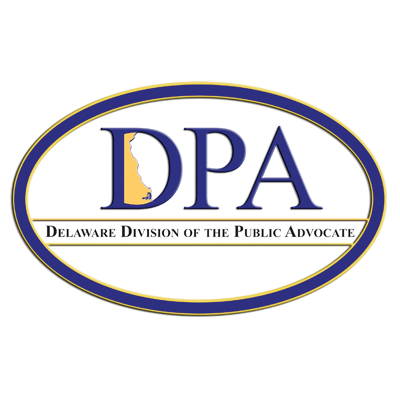Why is my DPL Bill so High?
Many Delmarva Power (DPL) customers have been shocked by substantial increases in their monthly electricity and gas bills recently.
Why are bills going up?
There are two basic components to DPL electric bills: Electric supply—the cost of the energy itself—and distribution or delivery charges—the cost to deliver that energy to customers. Both components are going up for different reasons. A third component—the renewable compliance charge (wind and solar as well as qualified fuel cells)—has not gone up in recent years.
These increases have hit customers particularly hard this winter as recent cold weather has driven electric demand higher, which in turn has driven the market cost of electricity higher.
Delmarva Power’s distribution charges are increasing
Your energy bill is going up mostly because the costs DPL charges to distribute or deliver gas and electricity to your home have been rising significantly in recent years.
Since 2015, DPL’s gas delivery charges — to pay for the gas distribution system, not the gas itself — have increased 46 percent. Since 2015, gas distribution rates increased from 49 cents per hundred cubic feet (CCF) to almost 73 cents per CCF, nearly one and half times the inflation rate (2.58%). A CCF is the unit used to measure how much gas you use in your home.

DPL’s electric delivery rates also have increased — 22 percent since 2020. Since 2015, rates have risen from 2.9 cents per kwh to 4.6 cents per kwh, over twice the inflation rate. A kilowatt hour (kwh) is the unit used to measure how much electricity you use in your home.

Combined with increased gas or electricity use (depending on your heating source) because of especially cold temperatures, customers are experiencing much larger bills than usual this winter. Given DPL’s electric rate increases, customers could see high bills in this coming summer as well, especially during heat waves where air conditioning units run more than normal.
Distribution rates generally increase based primarily on utility spending on new, long-lasting infrastructure, which increases utility profits as customers pay for the infrastructure through rate increases. Infrastructure includes, for example, gas pipes, electric wires and poles, meters, computers, trucks and other equipment.
The market cost of energy is increasing
Supply costs—the other major component of your gas and electric bills that are separate from distribution costs—are more volatile, going up and down depending on market conditions.
The cost of electricity for DPL’s residential, commercial, and small industrial customers is projected to increase in 2025.
Electric supply costs include normal costs for the transmission and generation of electricity. Transmission lines are big, high voltage power lines that generally carry large quantities of electricity over long distances. Generation means the output of power plants, such as fossil-fuel power plants or renewable energy such as wind and solar. Since DPL no longer owns generation resources, the company conducts an annual auction for the supply of generation called the Standard Offer Service (SOS). The annual SOS rates have risen and fallen over time with the costs of generation and transmission. The costs from the auction which is approved by PSC annually are passed through to consumers on their DPL utility bills.

Since natural gas fuels such a large portion of electricity generation in Delaware and the region, higher gas supply costs also are contributing to increased bills in winter 2025 compared to a year ago. More information on gas infrastructure spending and its impacts on utility customers is available here.
The cost of investing in renewable power sources has not increased over the last three years
One factor that has not gone up in the last few years is the cost of renewable energy. DPL, like other utilities, is required to buy an increasing amount of wind and solar energy, which is reported as a separate line item on customer bills. This is known as the RPS or renewable portfolio standard. The monthly cost of wind and solar for an average residential customer using 811 kWh/month, which fluctuates somewhat due to energy market conditions, has trended down 5 percent from three years ago.
| RPS compliance year | 2021-22 | 2022-23 | 2023-24 | 2024-25 |
|---|---|---|---|---|
| Customer @ 811 kWh/month | $5.43 | $5.20 | $3.95 | $5.16 |
DPL customers also pay small surcharges for qualified fuel cells (which help meet a portion of the RPS) and energy efficiency programs to help customers reduce their energy costs. These surcharges have not changed much in the last several years.
What can I do to keep my bill from increasing?
Most of your bill is calculated based on your usage. Using less electricity or gas over the month will lower your bill. You should consider reaching out to programs that can make your home more energy efficient.
The Department of Natural Resources and Environmental Control (DNREC) State Energy Office offers these energy saving ideas to help reduce your bill. We encourage customers to take advantage of the energy savings programs offered through the State Energy Office and Energize Delaware, a non-profit established by the State.
If you want to start small on your energy efficiency journey, call your utility company and request a FREE home energy audit. When you call, they will schedule a time for someone to come to your home and check for quick ways you can save money by reducing your usage. They will provide you with free energy saving products for your home like LED lightbulbs, a smart thermostat, water heater pipe insulation, and more.
Senate Bill 59 and Senate Bill 60, currently being considered in the General Assembly, will assist the Public Service Commission in limiting future rate increases. Please consider asking your State Representative and State Senator to support these bills.
Where can I get help?
If you are falling behind or struggling to pay your gas and/or electric bill, there is help available. The Delaware Public Advocate provides referrals to agencies that offer assistance with utility bills.

